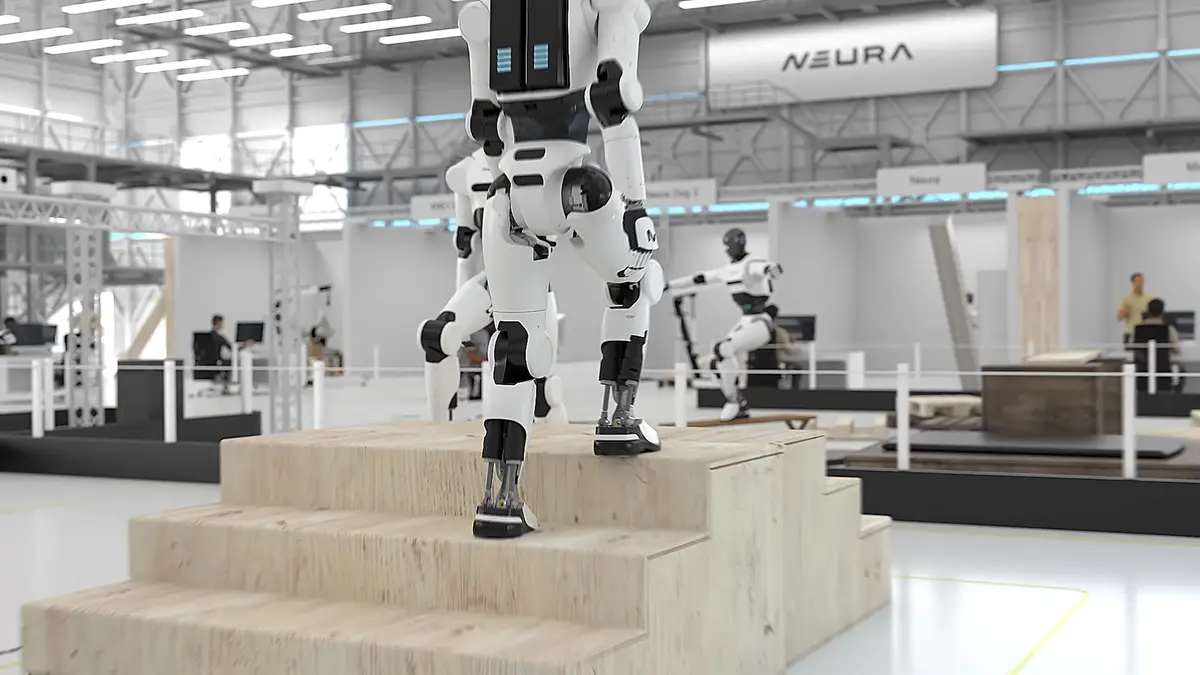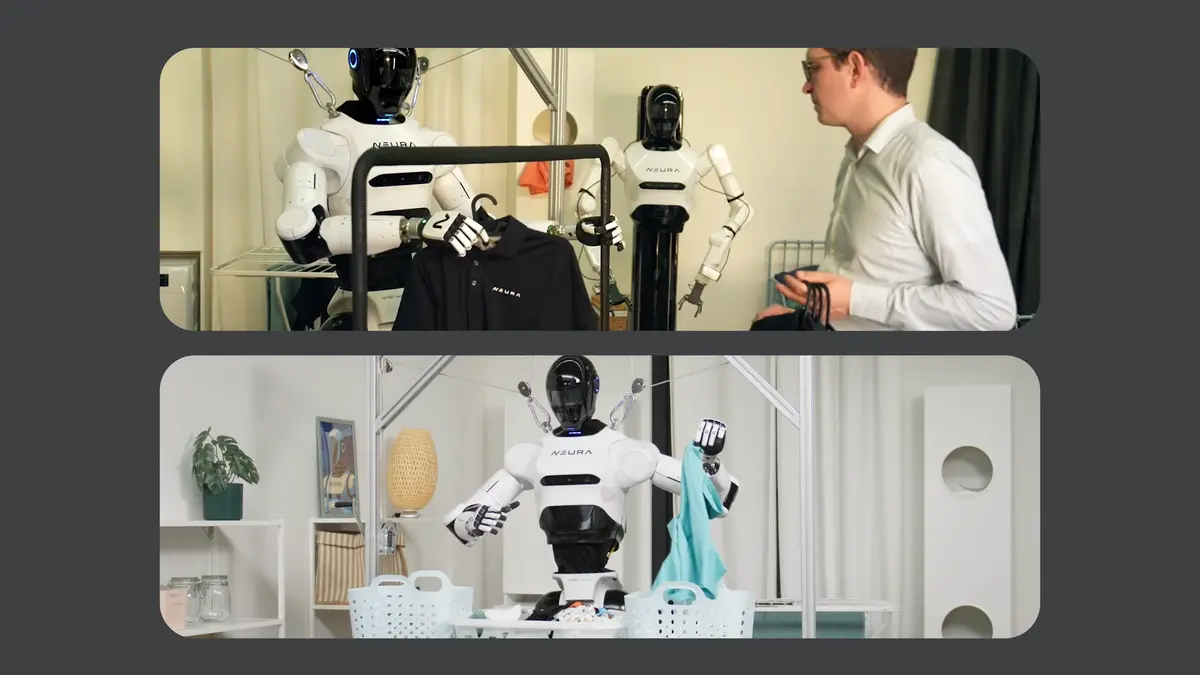- Published on
Neura Robotics Unveils ‘Neura Gym’ to Bridge AI’s Simulation-to-Reality Gap

German cognitive robotics firm NEURA Robotics today revealed (watch video) a key part of its strategy for developing intelligent robots: the NEURA Gym, a large-scale physical AI training center. In videos posted to social media, the company detailed its vision for a facility where hundreds of robots—including humanoids and other form factors—collect vast amounts of real-world interaction data to train more capable and reliable AI systems.
The announcement directly addresses what many in the field consider a fundamental bottleneck for progress in embodied AI. While simulations are critical for training at scale, models often struggle to adapt to the unpredictable nuances of the physical world—a problem often called the "sim-to-real gap."
NEURA's founder, David Reger, framed the problem with an analogy. "If you want to learn how to swim," he explained, training on video, simulation, or text data alone is insufficient. "To really learn being a swimmer, you need to actually first once touch the water."
A Hybrid Approach to Data Collection
The NEURA Gym is designed to be that water. The facility combines large-scale simulation with targeted, real-world data gathering. According to the company, the process involves a continuous loop: an AI model is trained on a combination of synthetic data and a smaller set of real-world "trajectories," which are collected by having physical robots perform tasks, sometimes guided by human teleoperators.
This hands-on data captures the precise physics of the robot's own hardware—its weight, momentum, and the sensory feedback from its grippers—in a way that pure simulation cannot. The AI model is then tested, its weaknesses are identified, and more physical data is collected to improve its performance in those specific areas.
All of this information feeds into the Neuraverse, a global cloud platform that acts as a central repository for this physical training data. The company's goal is to create a flywheel effect: as more data is collected, the models become more robust. Once a skill is mastered, it can be instantly deployed to any robot connected to the ecosystem.

Scaling Intelligence and Production
NEURA is positioning the Gym not just as an internal research tool but as a commercial service. Companies can book space within the facility to train their own applications, using NEURA's infrastructure and robots to solve their specific automation challenges.
This initiative also provides critical context for NEURA's recent, aggressive moves to scale its global manufacturing and supply chain operations. The company's ambition to create a global network of these data-collection centers requires a massive deployment of hardware. This strategy aligns directly with its recent establishment of a €45 million subsidiary in Hangzhou, China to access the region's rich robotics supply chain.
Furthermore, it complements a major partnership with Indian auto-tech giant Sona Comstar to jointly develop and manufacture its robots in India. While those deals secure the hardware pipeline for robots like the 4NE-1 humanoid, the NEURA Gym is designed to generate the intelligence that will make them useful.
With the launch of the NEURA Gym, the company is making a clear bet that the path to truly cognitive robots lies not in simulation alone, but in a hybrid approach grounded in physical experience. The success of this ambitious project will hinge on NEURA's ability to execute its plan to scale these facilities globally, proving that high-quality, real-world data is the missing ingredient for the next generation of intelligent machines.
Watch video reveal
Share this article
Stay Ahead in Humanoid Robotics
Get the latest developments, breakthroughs, and insights in humanoid robotics — delivered straight to your inbox.